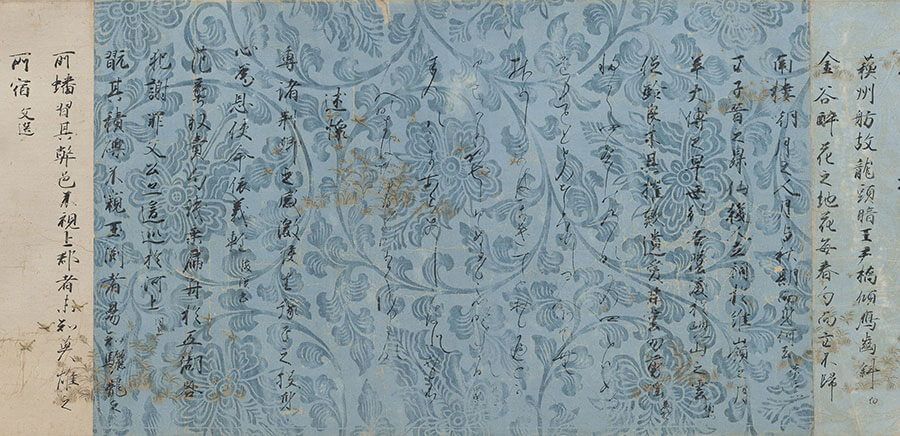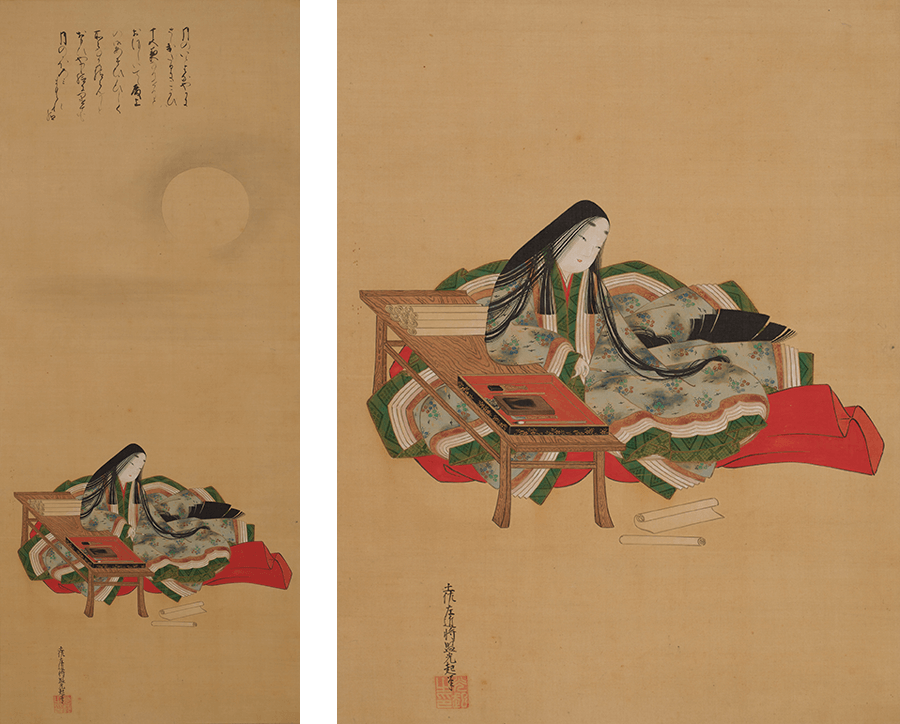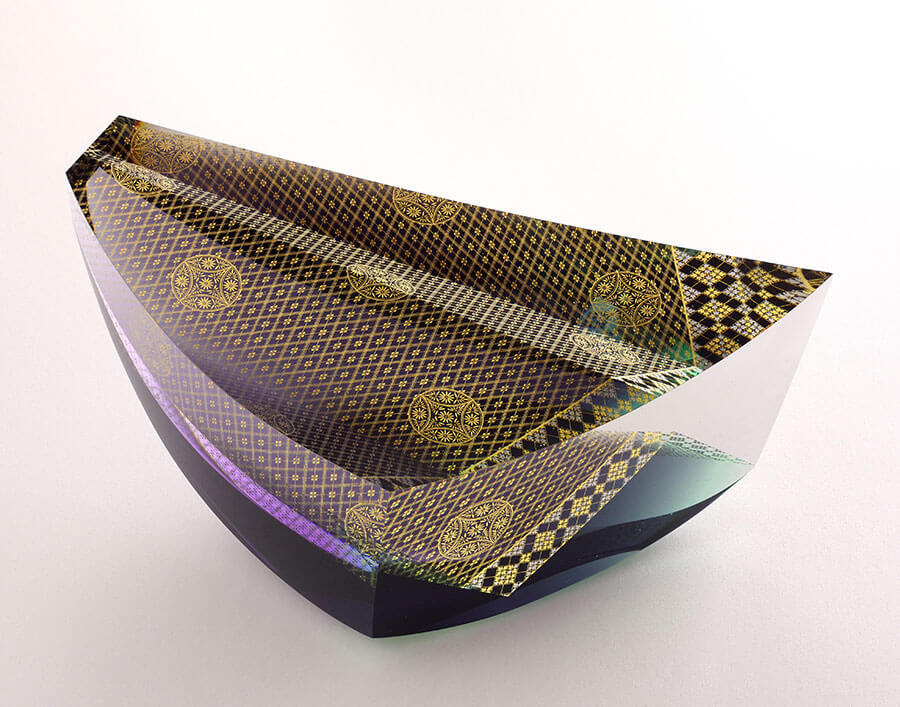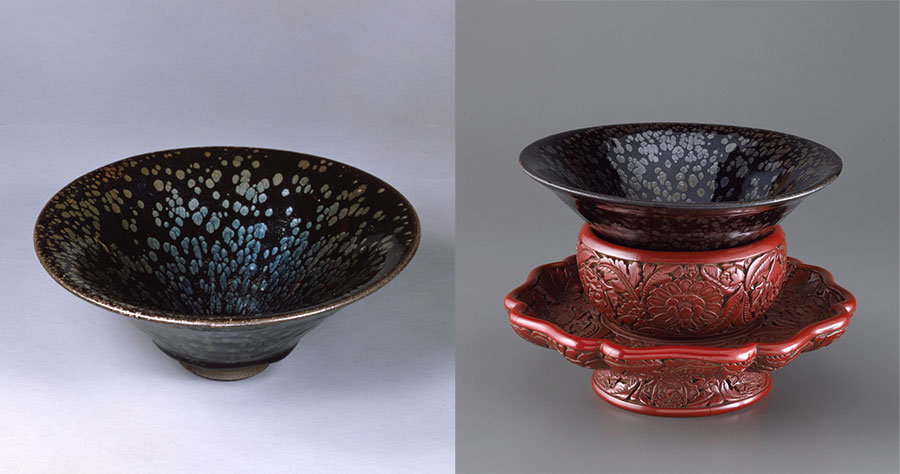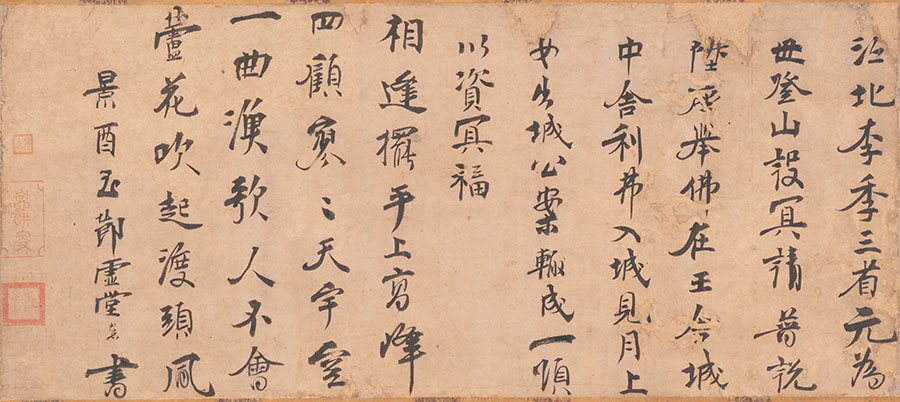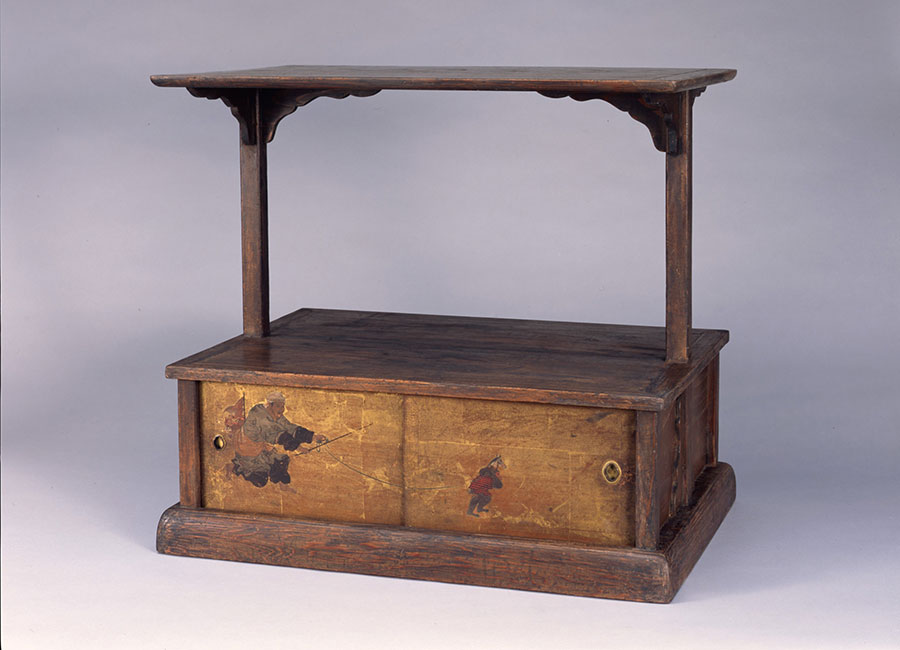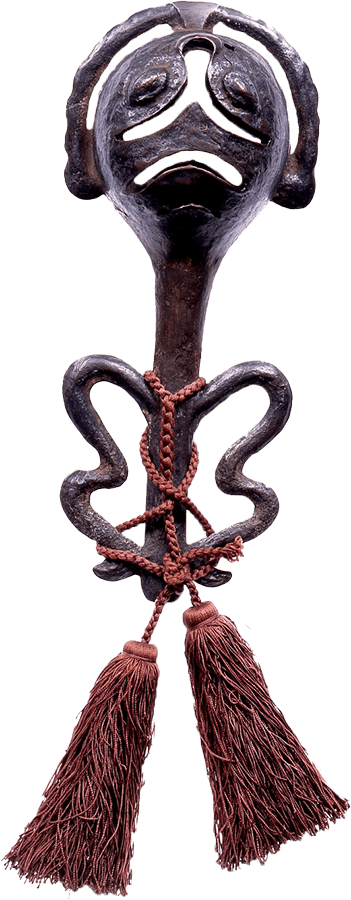Exhibition
Past Exhibition 2024-25
Elegance of Heian Literature:
The National Treasure The Tale of Genji Screens and the Evolution of Court Esthetics
November 16, 2024 – January 13, 2025

National Treasure
Channel Markers (Miotsukushi) and The Barrier Gate (Sekiya), Scene from The Tale of Genji, by Tawaraya Sōtatsu
Edo period, 1631
National Treasure
Collection of Japanese and Chinese Poems to Sing (Wakan Rōeishū), Known as the Ōta-gire(detail)
Heian period, 11th century
Important cultural property
The Tale of Sumiyoshi (Sumiyoshi Monogatari Emaki)
Kamakura period, 14th century
Lady Murasaki (Murasaki Shikibu), by Tosa Mitsuoki
Edo period, 17th century
Utsusemi (The Shell of the Locust), by Yamamoto Akane
2019 Private Collection
This exhibition focuses on Japanese art inspired by Heian Literature, including calligraphic scrolls, paintings of scenes from the Tale of Genji and Tale of Heiji, and exquisite craftworks. Visitors to this exhibition can enjoy the splendors of Heian literature through artistic masterpieces including sections from the Wakan Rōeishō poetry anthology, known as “Ōta edition”and Tawaraya Sōtatsu’s “Channel Markers”(Miotsukushi) and “The Barrier Gate”(Sekiya) of the Tale of Genji,” both national treasures.
Special Exhibition
“Ganpuku”:
A Feast for the Eyes – The Seikado’s Tea Utensil Treasures
with Masterpieces of Former Daimyō Collections
September 10 – November 4, 2024

Important cultural property
Tea bowl with black glaze. Yuteki (“oil spot” pattern) Tenmoku type.
China, Southern Song dynasty, 12th-13th century.
Tea caddy, Nasu (eggplant) type, known as “Tsukumo-nasu”, Karamono (Chinese) ware.
China, Southern Song to Yuan dynasty, 13th-14th century.
Important cultural property
Calligraphy by Xu-tang Zhi-yu: Verse known as “Jing-you zhi-jie”.
China, Southern Song dynasty, 1261.
Shelf for tea utensils with sliding doors with painting of “Saru-hiki” (monkey showman).
Attributed to Kanō Motonobu
Japan, Muromachi period, 16th century.
Tea caddy, Hyōtan (gourd) type, known as“Inaba-Hyōtan”, Karamono (Chinese) ware.
China, Southern Song to Yuan dynasty, 13th-14th century.
This exhibition presents an exquisite selection of formal tea utensils that previously belonged to prominent feudal lords, including the famous Tsukumo-nasu and Matsumoto-nasu “eggplant” tea caddies that were highlights of the collections of Oda Nobunaga, Toyotomi Hideyoshi, and Tokugawa Ieyasu, the legendary warlords who reunified Japan after more than a century of civil war. This exhibition brings together some of the highlights of the Seikado’s outstanding collection of tea ceremony utensils and promises a true feast for the eyes.
The “Perfect Guide to Japanese Swords,” Revived:
Studying the Great Swords of the Kamakura Period
June 22 – August 25, 2024

National Treasure, Tachi sword, signed “Kanenaga”, By Tegai Kanenaga
Kamakura period, 13th century
Important Cultural Property, Tachi sword, signed “Takatsuna”, Known as Takigawa(owner’s name) Takatsuna, Ko-bizen Takatsuna, 12-13th century, Kamakura period 
Katana sword, unsigned, Known as Goke Kanemitsu (widow’s Kanemitsu), Attributed to Osafune Kanemitsu,14th century, Nanbokucho period 
Important Cultural Property, Twelve Divine Generals (Horse General)”By Unkei’s Successors, ca.1228, Kamakura period 
Set of three sword fittings with design of Chinese characters in twelve zodiacal sign, Attributed to Gotō Jōshin, 16th century, Muromachi period
Reviving the “Perfect Guide to Japanese Swords” exhibition, which was a hit in the days when the museum was located in Okamoto, Setagaya-ku, this exhibition will be the first to focus on Japanese swords since we moved to our new premises in Marunouchi. The exhibition brings together nine swords from the museum’s collection that have been designated as national treasures and important cultural assets and provides the ideal introduction to the appreciation of Japanese swords, with a focus on the Kamakura Period.
Special Exhibition to Mark 100 Years Since the Completion of Seikado Bunko
The Demon Painter and the Demon Collector:
Kawanabe Kyōsai and Matsuura Takeshirō
April 13 – June 9, 2024

Inportant Cultural Property, “Nirvana Painting of Matsuura Takeshirō” by Kawanabe Kyōsai, Meiji period, 1886, from the collection of the Matsuura Takeshirō Memorial Museum 
Necklace (Jōmon Period with modern additions) Collection of the Seikado Foundation 
Kawanabe Kyōsai, Travelling through hell and paradise, Meiji era, dated 1869-72, Collection of the Seikado Foundation 
‘A Bell of Devil’s Face’ by Kawanabe Kyōsai, from“Hatsuunyokyo”, 1882, Collection of the Seikado Foundation 
A Bell of Devil’s Face, Collection of the Seikado Foundation
The painter Kawanabe Kyōsai and Matsuura Takeshirō, the explorer, antiquarian, and writer who gave Hokkaido its modern name, were two multi-talented figures active in the closing years of the feudal era. This exhibition unites Kyōsai’s famous “Nirvana Painting of Matsuura Takeshirō” with the cultural treasures depicted in the painting, to consider these two men’s passion for ancient times.




